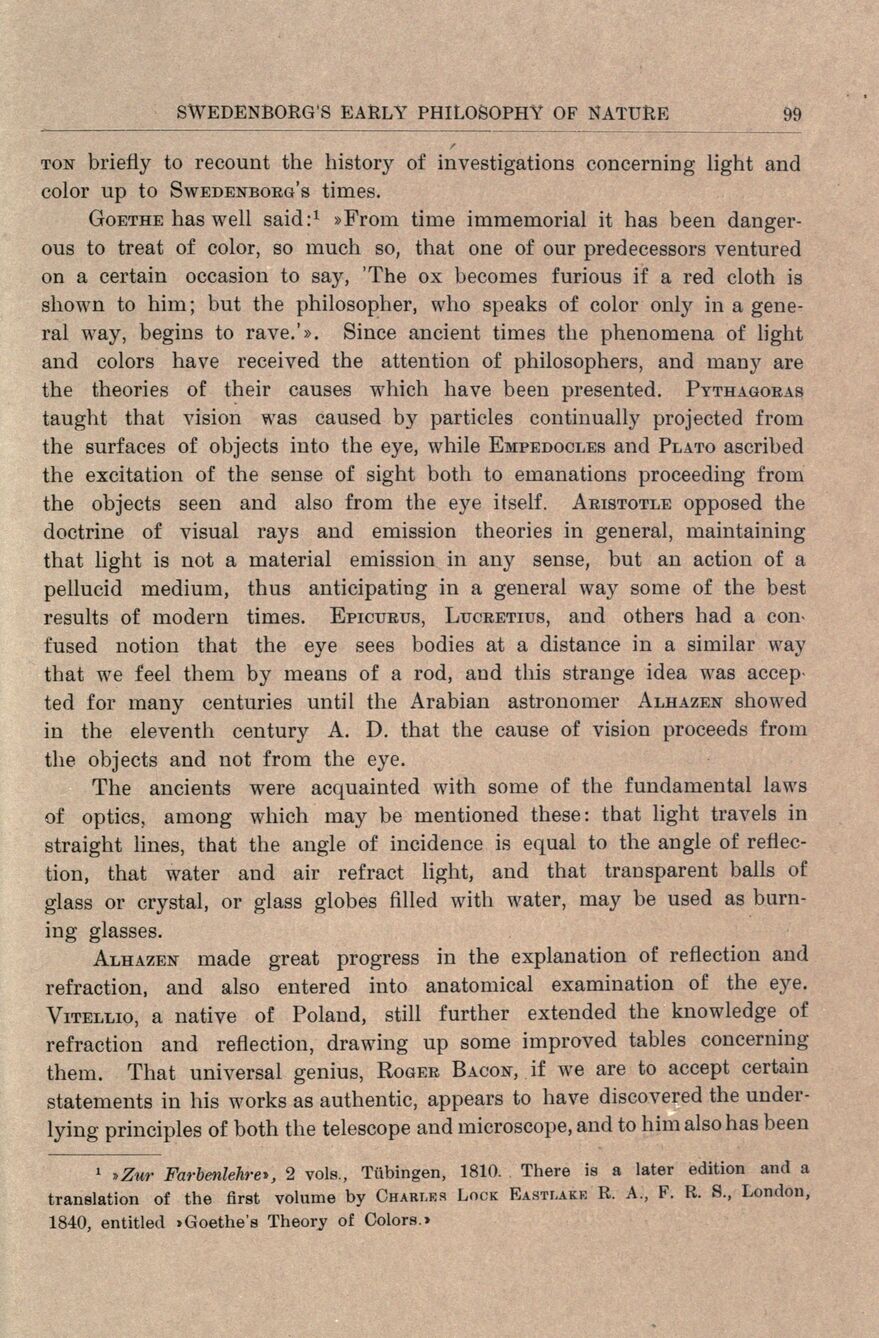
Full resolution (JPEG) - On this page / på denna sida - Sidor ...

<< prev. page << föreg. sida << >> nästa sida >> next page >>
Below is the raw OCR text
from the above scanned image.
Do you see an error? Proofread the page now!
Här nedan syns maskintolkade texten från faksimilbilden ovan.
Ser du något fel? Korrekturläs sidan nu!
This page has never been proofread. / Denna sida har aldrig korrekturlästs.
ton briefly to recount the history of investigations concerning light and
color up to Swedenborg’s times.
Goethe has well said:1 »From time immemorial it has been
danger-ous to treat of color, so much so, that one of our predecessors ventured
on a certain oecasion to say, ’The ox becomes furious if a red cloth is
shown to him; but the philosopher, who speaks of color only in a
general way, begins to rave.’». Since ancient times the phenomena of light
and colors have received the attention of philosophers, and many are
the theories of their causes which have been presented. Pythagobas
taught that vision was caused by particles continually projected from
the surfaces of objects into the eye, while Empedocles and Plato ascribed
the excitation of the sense of sight both to emanations proceeding from
the objects seen and also from the eye itself. Aristotle opposed the
doctrine of visual rays and emission theories in general, maintaining
that light is not a material emission in any sense, but an action of a
pellucid medium, thus anticipating in a general way some of the best
results of modern times. Epicurus, Lucretius, and others had a
con-fused notion that the eve sees bodies at a distance in a similar wav
that we feel them by meaus of a rod, aud this strange idea was
accep-ted for many centuries until the Arabian astronomer Alhazen showed
in the eleventh century A. D. that the cause of vision proceeds from
the objects and not from the eye.
The ancients were acquainted with some of the fundamental laws
of optics, among which may be mentioned these: that light travels in
straight lines, that the angle of incidence is equal to the angle of
reflec-tion, that water aud air refract light, and that transparent balis of
glass or crystal, or glass globes filled with water, may be used as
burn-ing glasses.
Alhazen made great progress in the explanation of reflection and
refraction, and also entered into anatomical examination of the eye.
Vitellio, a native of Poland, still further extended the knowledge of
refraction and reflection, drawing up some improved tables concerning
them. That universal genius, Roger Bacon, if we are to accept certain
statements in his works as authentic, appears to have discovered the
under-lying principles of both the telescope and microscope, and to him also has been
1 *Zur Farbenlehre*, 2 vols., Tiibingen, 1810. There is a later edition and a
translation of the first volume by Chari.es Lock Easteake R. A., t. R. S., London,
1840, entitled »Goethe’s Theory of Colors.»
<< prev. page << föreg. sida << >> nästa sida >> next page >>